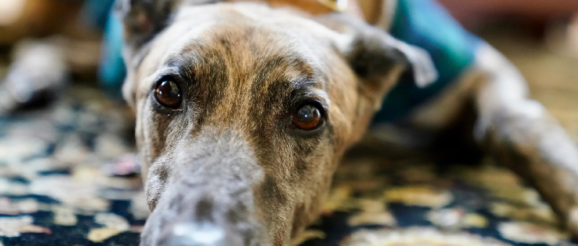Is Technology Breathing New Life Into Inhumane Greyhound Racing? – Innovation & Tech Today

By guest author
Christine Ann Dorchak, Esq., President, GREY2K USA Worldwide
For many years, American dog racing has been in catastrophic decline. Once considered hotspots for Hollywood royalty and sports stars alike (John Wayne, Janet Leigh, Frank Sinatra, Babe Ruth and Joe DiMaggio were among dog racing’s original supporters), dog tracks lost their appeal as state lotteries, commercial casinos and other gambling opportunities came into play.
Over the last 25 years alone, the number of operating facilities has plummeted from over fifty to just two, both in the state of West Virginia. This is the result of continuing legislative campaigns to outlaw dog racing, but first began when people got up and voted with their feet. Racetrack attendance all but disappeared, and beleaguered dogs ran around in circles with nobody watching. Mass media played a major role in this transition. From the December 1989 Simpsons episode featuring a rescued greyhound named Santa’s Little Helper, to the 1993 National Geographic Explorer exposé showing the wanton killing of ex-racers, Americans found themselves confronted with the ugly realities of dog racing.

Despite all the bad publicity and increased competition from slot machines in particular, dog racing briefly rebounded with the invention of simulcasting. Simulcasting, the remote broadcast of races from one track to another, allowed one facility to prop up another. The new access also allowed tracks to offer a wider variety of races taking place over different time periods. But because simulcasting depends on the sharing of signals, even this market shriveled substantially over time. So while simulcasting helped, greater intervention was needed. Dog tracks like Multnomah Greyhound Park in Oregon simply closed with the end of live racing in 2004, but other dog tracks retained their licenses in hopes of a brighter day, and to act as hybrid OTBs for an ever-increasing business in horse simulcasting.
Greyhound gambling on the internet
With only two tracks remaining in the United States, commercial greyhound racing should have ended long ago. But proponents have gained yet another lifeline with the advent of online wagering. Essentially, anyone with a cell phone can place a bet on races happening anywhere. No longer must a gambler go to a seedy, broken down dog track to bet on greyhounds! This goes a long way to solving some of the industry’s aesthetic problems. Additionally, there is a clear disconnect between what is happening to the dogs and a gambler’s limited ability to understand their fate. When results flash up and “DNF” appears on the screen next to a dog’s name, this means that the dog has collapsed. But all the gamblers can know is that he “did not finish.” Out of sight, out of mind.
What is life like for a racing greyhound?

Racing greyhounds are kept confined in small metal cages inside dark warehouse style kennel buildings for an average of 23 hours a day. (Imagine stacked chicken coops for dogs). They are fed a diet based on cheap, downer meat. There are no toys for them and no play. Their “beds” consist of piles of shredded newspaper or old carpet scraps.
When these gentle hounds are let out to race several times a month, they face the risk of serious injury. A dog died every three days in Florida until the election of 2018, when voters passed a ban on dog racing. But West Virginia greyhounds continue to suffer to this day, risking crushed skulls, fractured legs, torn and twisted muscles, seizures, heat stroke and paralysis at every turn. Drugging and race fixing are also a significant problem.
Horse racing lends another hand
Churchill Downs (CHDN) through its online betting service, TwinSpires, is the leading American corporation backing online wagering on dogs. CHDN is taking bets on the nearly 2,000 greyhounds racing at Wheeling and Tri-State in West Virginia. It has also opened its platform to carry foreign races, like those at Mexico’s Agua Caliente, where humane standards are nil. Fidelity Investments is the largest investor in CHDN, so it too is capitalizing on the cruelty.
Greyhound advocates are actively responding to these new challenges. As long as greyhound racing continues, innocent dogs will suffer. Please read more about online greyhound gambling and support our TwinSpiresCruelty campaign.
Christine Ann Dorchak is the President and General Counsel of international greyhound protection group, GREY2K USA Worldwide. The non-profit works to pass laws to protect greyhounds and promote the adoption of ex-racers across the globe. Since its formation in 2001, GREY2K has closed down forty-six American tracks as well as the only legal track in China, helping to rescue 532 surviving dogs from the once-deadly Macau Canidrome. In 2008 and 2018, it passed ballot questions to outlaw dog racing in two of its biggest states, Massachusetts and Florida. Greyhound racing is now illegal in 42 US states. Learn more at grey2kusa.org or visit GREY2K USA on Facebook, Twitter and Instagram.
